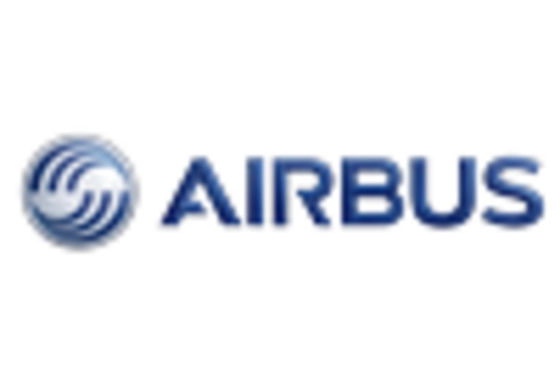Data-Driven Decision Making
The Airline IoT Market is increasingly driven by the need for data-driven decision making. Airlines are leveraging IoT technologies to collect vast amounts of data from various sources, including aircraft sensors, passenger devices, and operational systems. This data enables airlines to analyze performance metrics, optimize routes, and enhance customer service. For instance, predictive analytics can forecast maintenance needs, potentially reducing downtime and operational costs. According to industry estimates, the integration of IoT solutions can lead to a 10-15% reduction in operational expenses, thereby improving profitability. As airlines continue to embrace data analytics, the demand for IoT solutions is expected to rise, further propelling the Airline IoT Market.
Enhanced Safety and Security
Safety and security concerns are paramount in the Airline IoT Market, driving the adoption of advanced IoT solutions. Airlines are increasingly implementing IoT technologies to enhance passenger safety and streamline security processes. For example, biometric identification systems and smart baggage tracking solutions are becoming more prevalent, improving the overall travel experience. The global market for aviation security solutions is expected to reach USD 10 billion by 2026, indicating a robust growth trajectory. By integrating IoT devices, airlines can not only ensure compliance with safety regulations but also enhance customer trust and satisfaction. This focus on safety and security is likely to be a significant factor in the growth of the Airline IoT Market.
Cost Reduction and Efficiency Gains
Cost reduction and efficiency gains are pivotal drivers in the Airline IoT Market. Airlines are under constant pressure to lower operational costs while maintaining high service levels. IoT technologies enable airlines to optimize fuel consumption, streamline ground operations, and enhance resource allocation. For instance, smart fuel management systems can lead to a reduction in fuel costs by up to 5%, which is substantial given that fuel typically accounts for a significant portion of airline expenses. Furthermore, the implementation of IoT solutions can improve turnaround times, thereby increasing aircraft utilization. As airlines seek to enhance their bottom line, the focus on cost reduction through IoT adoption is likely to accelerate within the Airline IoT Market.
Regulatory Compliance and Standards
Regulatory compliance and standards are increasingly influencing the Airline IoT Market. As governments and aviation authorities establish stricter regulations regarding safety, emissions, and data privacy, airlines must adopt IoT solutions to ensure compliance. For example, the International Civil Aviation Organization (ICAO) has set guidelines for the use of data in aviation, which necessitates the integration of IoT technologies. The market for compliance-related IoT solutions is expected to grow as airlines invest in technologies that facilitate adherence to these regulations. This focus on compliance not only mitigates legal risks but also enhances operational transparency and accountability. Consequently, the emphasis on regulatory compliance is likely to drive growth in the Airline IoT Market.
Real-Time Monitoring and Maintenance
Real-time monitoring and maintenance capabilities represent a crucial driver in the Airline IoT Market. IoT devices facilitate continuous monitoring of aircraft systems, allowing for immediate detection of anomalies and potential failures. This proactive approach to maintenance can significantly enhance safety and reliability, which are paramount in the aviation sector. The market for predictive maintenance solutions is projected to grow at a compound annual growth rate of approximately 25% over the next few years. By utilizing IoT technologies, airlines can minimize unscheduled maintenance, thereby reducing costs and improving aircraft availability. Consequently, the emphasis on real-time monitoring is likely to bolster the Airline IoT Market.


















Leave a Comment